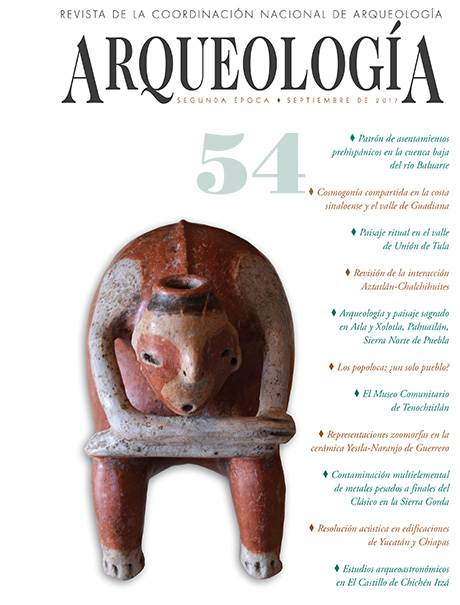Un minero en la Sierra Gorda: caso de contaminación ocupacional multielemental de metales pesados a finales del periodo Clásico
Keywords:
Sierra Gorda, heavy metals, bioaccumulation, mercury, cinnabar, lead.Abstract
One of the topics of archaeological investigation in the southern portion of the Sierra
Gorda has been pre-Hispanic mining from an inter- and multi-disciplinary perspective, where
projects directed by the authors, “Toluquilla” and “Ranas and Their Mines,” focus on the largest settlements on a regional scale. Both settlements are 150 km northeast of the state’s capital in the area of one of the country’s richest cinnabar and mercury deposits. This resource did not go unnoticed in ancient times since it was controlled, exploited, and exchanged with other regions of ancient Mexico from early times. In Mexico the systematic study of pre-Hispanic cinnabar mining has only been carried out at the Sierra Gorda of Querétaro by our projects and here we present a case for how mineral extraction affected the population’s health. It concludes that in successive bioarchaeological studies in cases involving the use and management of metallic minerals it is important to determine the degree of contamination to evaluate the health conditions of the population.



